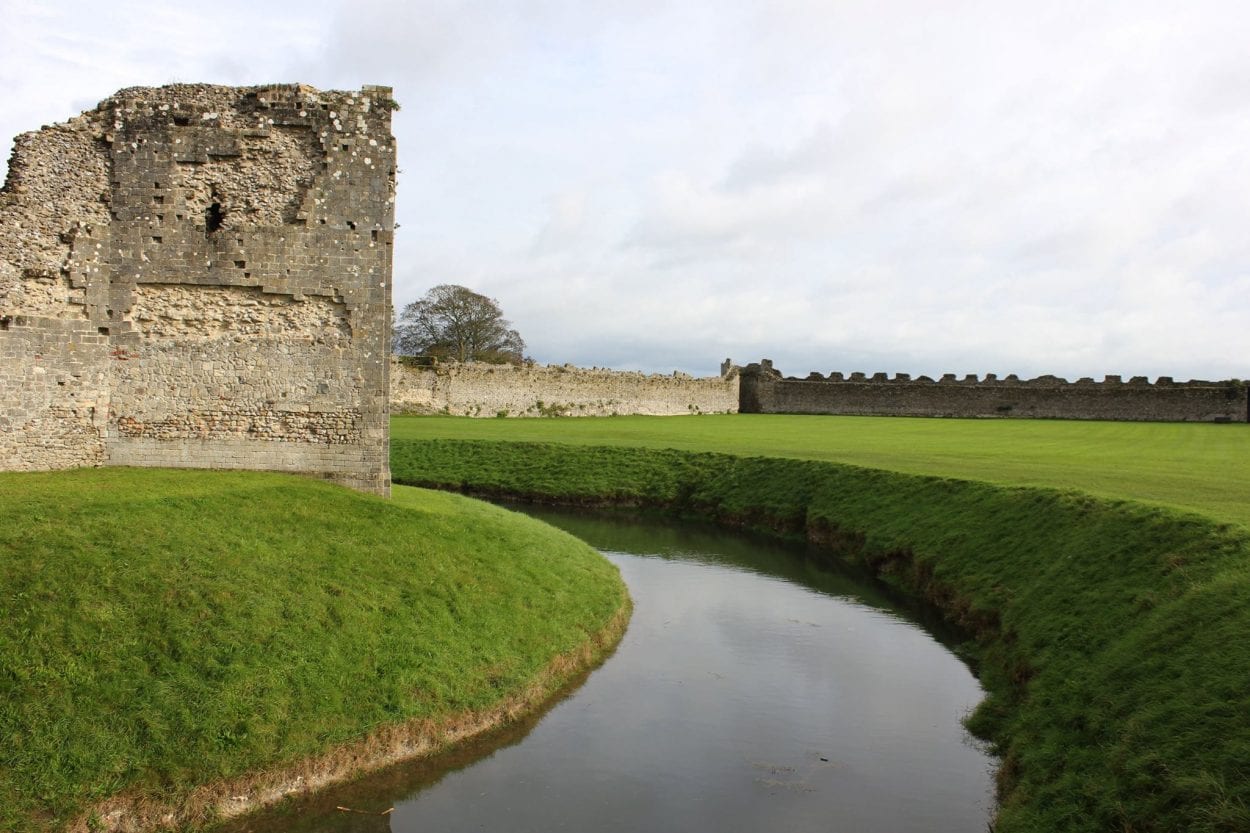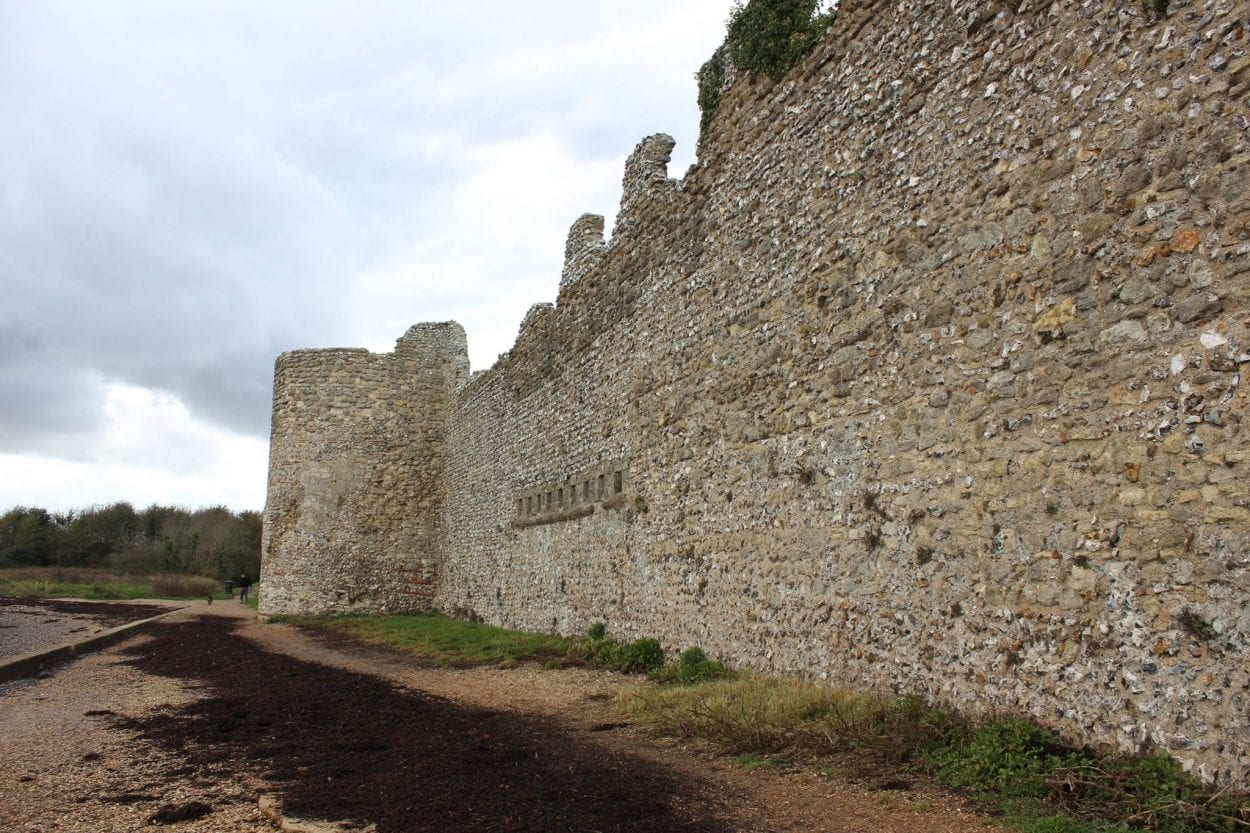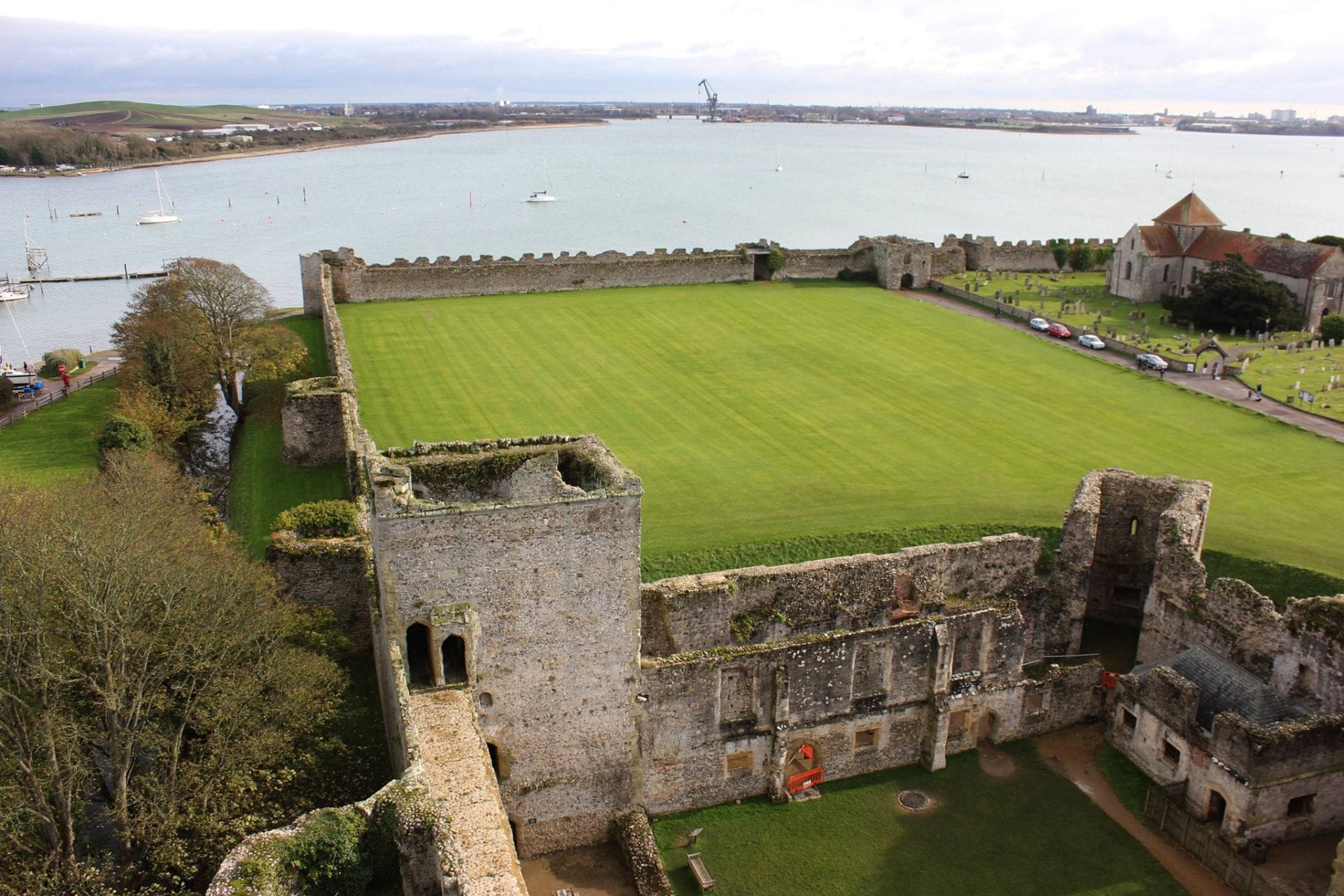Portchester Castle is a medieval fortress, constructed within the walls of a Roman Saxon Shore Fort (Portus Adurni), located in Portchester, England.
Saxon Shore forts are defensive fortifications, built by the late Roman Empire to defend the coast of the Roman province of Britannia (Britain), and the opposite side of the English Channel.
During the 3rd century, the Roman Empire was weakened by the succession of brief emperors on the throne, internal fighting and invading tribes encroaching the Empires borders and frontiers.
Britannia was no exception, with repeated Saxon and Frank pirates raiding the coastline. To counteract this threat, a great chain of forts called the Saxonicum (Saxon Shore) was commissioned to protect the Roman population and strategically important sites from the raiding parties.

It is suggested that Portus Adurni was constructed by Marcus Aurelius Carausius on the instructions of emperor Diocletian between AD 285 and 290. The fort likely served as one of the bases for the Classis Britannica, a provincial naval fleet that protected the Saxon Shore using a liburnian bireme.
The fort enclosed an area of 9 acres, with outer walls 20 feet high constructed of coursed flint bonded with limestone slabs. The walls and bastion towers remain relatively intact, making Portus Adurni one of the best-preserved Roman forts north of the Alps.

Although the Roman army retreated from Britain in the early 5th century, archaeological evidence suggests that the fort continued to be occupied, and later became an Anglo-Saxon high-status residence with a great hall and tower.
In the aftermath of the Norman Conquest in AD 1066, a large castle was constructed using the Roman walls to form the outer bailey. The date of Portchester Castle’s construction is unknown, but the earliest reference dates from a grant issued in AD 1153, where Henry Plantagenet, later King Henry II granted the castle to Henry Maudit.

Portchester Castle would serve as a Royal residence for successive Kings over the next several centuries, hosting notable monarchs such as King John, Edward III, Henry V, Henry VIII with Queen Anne Boleyn, and Queen Elizabeth I.
The castle passed out of royal control in AD 1632 when Charles I sold it to Sir William Uvedale. Since then, Portchester Castle served as a prison for the Second Anglo-Dutch War, the War of the Spanish Succession, and the Napoleonic Wars.





